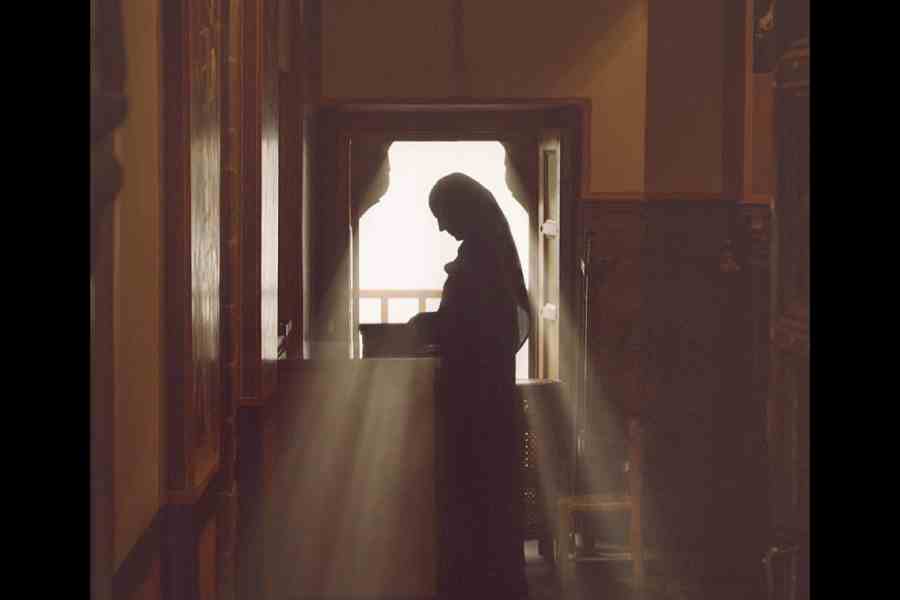STONE YARD DEVOTIONAL
By Charlotte Wood
Sceptre, Rs 799
In wanting to escape the chaos of our capitalist and consumerist lifestyles, we get more and more entangled in their webs. Charlotte Wood’s middle-aged, unnamed narrator decides to break free from this vicious cycle and find solace in reality. She finds herself at a nunnery in New South Wales, away from her urban life, a marriage, and a career in Sydney, in what is “supposed to be a place of refuge, of steadiness. Not agitation.”
In this strange place, which has “the feel of a 1970s health resort or eco-commune, but is not welcoming”, all psalms are sung in the same tune, with words making little or no sense. Her first five days at the nunnery serve as the starting point for this otherwise unstructured novel. All context and her history, whatever little Wood allows a preview of, are presented through either a memory or a moment of contemplation, including one where the narrator remembers her work with the ‘Threatened Species Rescue Centre’ or another in which she contemplates whether there was a better way of taking the decision she did.
After a brief introduction to the nunnery, the nuns, and the humdrum of the place, Wood skips four years to the present where three “visitations”, as she has called them in her interviews, disrupt the narrator’s solitude. Mortal remains — bones and skeleton — of a nun who suspiciously disappeared in Thailand are discovered and are to be brought back to Australia by the radical environmentalist and nun, Helen Parry, who reminds the narrator of an unpleasant memory from school. As if these two disruptions were not enough, there is an explosion in the mice population in the rural area. The detail in which Wood describes the mouse plague — something that did happen Down Under in 2021 — is grotesque.
Amidst this chaos, the narrator continues to refrain from engaging in the “biblical mumbo jumbo” and “the ‘falling in love with Jesus’ talk”. She sticks to a routine of running errands, cooking, cleaning, setting mouse traps and shovelling the bodies of mice into a pit. The novel, however, offers a window into the ongoing chaos within her. Memories from school, work, and marriage refuse to leave. The disruptions of the urban life, the one she had deliberately left behind, find their way back. She remembers Maria Goretti from her town, the girl who refused to commit a “Mortal Sin” and died a violent but virgin death; she remembers her mother’s quirks and nobility; she remembers a friend who died of the same illness as her mother and wonders what more she could have done for them both — “When I think about the phases of my life, it is as a series of rooms behind me, each with a door to a previous room left open, behind which is another room, and another and another. The rooms are not quite empty, not exactly dark, but they are shadowy, with indistinct shapes, and I don’t like to think about them much.” And yet, she opens almost all these doors, possibly involuntarily.
Stone Yard Devotional is a collection of snippets from her life resembling undated diary entries. “Nobody will read this but me. Even so, I imagine there are things I’m leaving out,” she writes and, at times, the novel does give a sense of incompleteness. The taxing mental and emotional maze that Wood creates is hypnotic but there is something essential missing in the story — perhaps a structure, for the lack of a better word. There are mentions of suicide, eating disorders, climate change, epidemics and pandemics, but there is no real reflection on these issues. Given the narrator’s wariness towards religion, her choice of staying at the nunnery seems a bit odd. But her desire to get away is understandable given the chaotic times. Helen Parry’s life history, on the other hand, appears to have much more gravitas and substance than that of the narrator. Finally, even though it is advertised as a tale of friendship, the story feels nowhere near it. This is a tale of finding one’s inner calm in a world on fire.
As more and more novels that lack a concrete form emerge in the market, I mourn the kind of fiction that had a plot line with discernible characters and a direction to follow.










